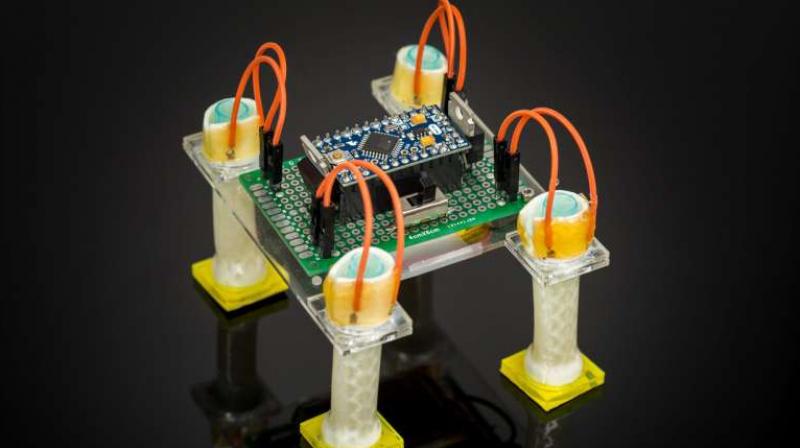Engineers develop tool to make soft robots less bulky
14 October, 2019

With the help of new development by the researchers it will now be possible to build soft robots that are compact, portable and multifunctional.
The advance was made possible by engineers at the University of California San Diego who created soft, tubular actuators whose movements are electrically controlled, making them easy to integrate with small electronic components.
As a proof of concept, engineers used these new actuators to build a soft, battery-powered robot that can walk untethered on flat surfaces and move objects. They also built a soft gripper that can grasp and pick up small objects.
The team, led by UC San Diego mechanical and aerospace engineering professor Shengqiang Cai, published in -- Science Advances.
A problem with most soft actuators is that they come with bulky setups. That's because their movements are controlled by pumping either air or fluids through chambers inside.
So building robots with these types of actuators would require tethering them to pumps, large power sources, and other specialized equipment.
In the current study, UC San Diego engineers created soft actuators that are controlled with electricity. "This feature makes our tubular actuators compatible with most low-cost, commercially available electronic devices and batteries," Cai said.
The actuators are made from a type of material used for artificial muscles in robots, called liquid crystal elastomers. They are composed of liquid crystal molecules embedded in a stretchy polymer network.
What's special about these materials is they change shape, move and contract in response to stimuli such as heat or electricity -- similar to how muscles contract in response to signals from nerve cells.
To construct each actuator, engineers sandwiched three heating wires between two thin films of liquid crystal elastomer. The material is then rolled into a tube, pre-stretched and exposed to UV light.
Each heating wire can be controlled independently to make the tube bend in six different directions. When an electric current is passed through one or two of the wires, it heats up part of the tube and makes it bend in the direction of those wires.
When a current is sent through all three wires, the entire tube contracts, shortening in length. When the electricity is turned off, the tube slowly cools down and returns to its original shape.
"Using an externally applied electrical potential makes it easy to program the position of each tubular actuator," said first author Qiguang He, a mechanical and aerospace engineering Ph.D. student at the UC San Diego Jacobs School of Engineering.
Combining multiple actuators together enabled engineers to build different types of soft robots. They built an untethered, walking robot using four actuators as legs.
The team is now working on making soft actuators that can move faster.
Source:
TAG(s):
